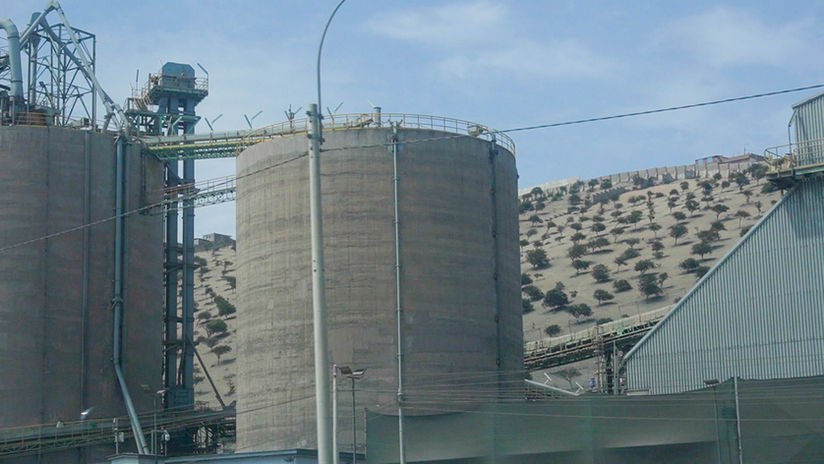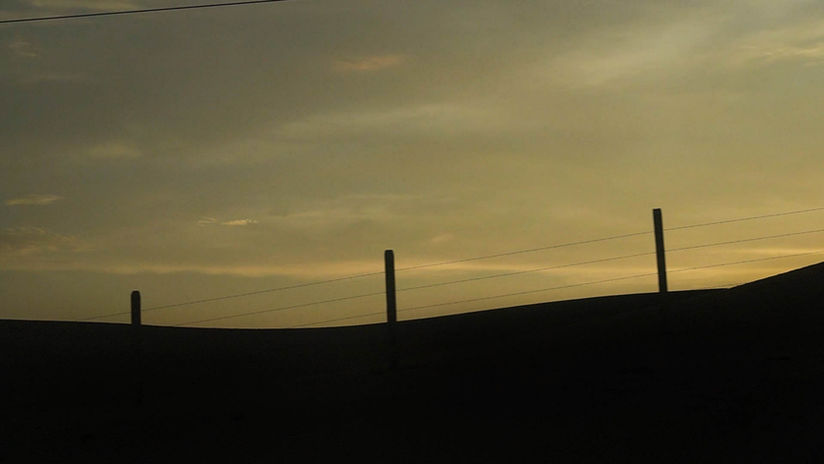Esqueleto de un proceso racional que no deja de ser emocional
- Psicogeografía Asimétrica -
¿Qué es un texto de análisis sobre un texto de análisis?
El metatexto del metatexto.
La reflexión de la reflexión.
La explicación de algo que ya es explicativo en sí mismo pero que a su vez carga con una serie de decisiones que finalmente describen, a detalle, lo que he querido mostrar aquí.
Porque si bien filmar y editar ya habla de ideología (de una mirada particular, con perspectiva), no pocas veces se necesita aclarar ciertas cosas sobre lo que se muestra.
Un atardecer no siempre es solo un atardecer y en el caso de mi trabajo esa imagen tiene que ver con el horizonte costero y la fragmentación de una ciudad que ha sido -aterrizada- en el desierto y que parece que se diluye en medio de la autopista y el mar.


Seleccionar esos cientos de fotogramas de las horas recopiladas de viaje por el sur de Lima, juntarlas, separarlas una y otra vez. Terminar poniéndolas de forma geográfica, es decir, una detrás de otra como los kilómetros están uno detrás de otro en un mapa.
Al final de todo este juego obtuve una línea de 10 metros de largo que resumían mi experiencia de vida con ese territorio desértico y ruinoso que siempre experimenté como un planeta remoto.
En el mundo racional este es mi reflexive work , en el mundo emocional es el horizonte que me falta en el paisaje suizo.
''...Cuando estoy lejos lo extraño y me da vértigo cuando no lo veo...'''

Montar esas imágenes con mi voz en off para hablar de lo que siento y experimento; de la racionalidad y la emotividad, del deseo y la catástrofe.
Hablar de los colores, las texturas y las materialidades de ese lugar que es mi memoria pero que también es la experiencia de la extrañeza - the uncanny-
Darle sentido a todo esto fue como abrirme a recuerdos, a teorías, a explicaciones y poesía sobre el desierto, el mar, la migración del campo a la ciudad, las promesas incumplidas, la pobreza y la precariedad de una ciudad que se hunde en la bruma de la desidia. Pero al mismo tiempo de ese encanto del cual es imposible de escapar.

En paralelo, durante este paseo que hacia con la cámara, me confronto de pronto con esta enorme mole de concreto y hacia arriba tengo que mirar en una zona híper urbanizada con mucho movimiento y tráfico.

Es este edificio de 25 pisos que lleva ahí parado por cinco décadas sin terminar, no hay ventanas, no hay puertas, no hay nada. Solo el esqueleto. Pero desde ahí se ha dicho que será una promesa que llegará. Se dice que será renovado y que cientos de consultorios médicos serán habilitados para atender a millones de personas. Me puse a investigar el caso y descubrí muchos mitos alrededor de este:
- Hay un fallo estructural de 15 cm de inclinación
- Essalud -los dueños- robaron una calle que esta al lado del edificio y es por eso que la municipalidad no aprueba el permiso de renovación hasta que devuelvan la calle y con ellos el tráfico fluido.
- Se necesitan 150 millones de soles para revivirlo, lo cual es una inversión demasiado grande y no creen que valga la pena.
Todo es un chisme, todo es desconocido, y no pude acceder ni a los planos ni a los documentos oficiales.
Para mí, este edificio resumía todo lo que estaba viviendo en mi proceso, así como el sistema y la historia del lugar que estaba recorriendo e investigando.
En ese momento empecé a jugar con su forma y su material. Especulé sus planos a partir de Google Earth, de artículos y fotos.






Decidí hacer unos vaciados de concreto respetando el diseño original (bueno, el que había podido calcular desde afuera) porque me sentí muy atraída también por su modernidad, su geometría y símbolos. En los intentos por lograr las piezas, fui deconstruyendo el edificio en partes para luego volver a construirlo. Descubrí que tiene una forma completamente simétrica por lo cual podía repetir la misma forma una y otra vez y jugar con las posibilidades que me daban las piezas como rompecabezas. si construimos todos estos bloques de una manera, tendríamos el edificio como su forma real. Pero lo que realmente quería hacer es des-construirlo para construir algo nuevo.
En ese proceso me relacioné también con el concreto que es un material que tiene mucha carga en la historia de la construcción y descubrí su toxicidad, su pesadez, y lo agotador que es trabajar con el si bien tengo una fascinación por su acabado final. Una vez más en la ambigüedad, entre la atracción y el rechazo.
Finalmente el resultado son 18 bloques de concreto que funcionan como las partes de este edificio inconcluso pero también como metáfora de un proyecto sin terminar, como el mismo territorio que observo: inconcluso, ruinoso, a medio hacer, como si hubiera sido abandonado. Habla, también, de la promesa de país que no acaba por llegar. De la rudeza del territorio, de los colores de mi recuerdo, de las partes que habría que juntar para comenzar a pensar en la posibilidad.

























